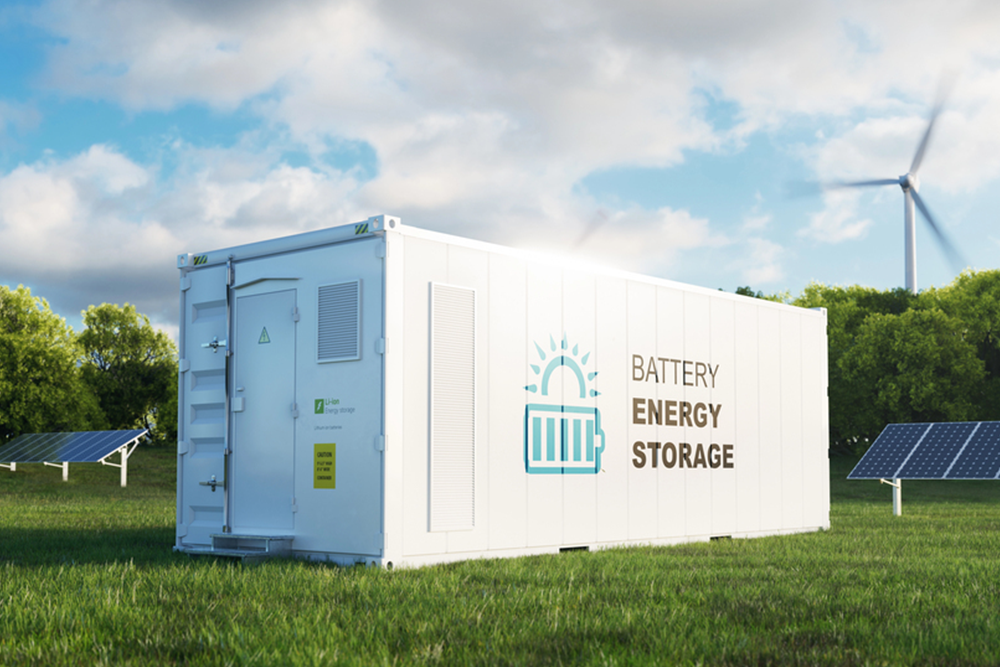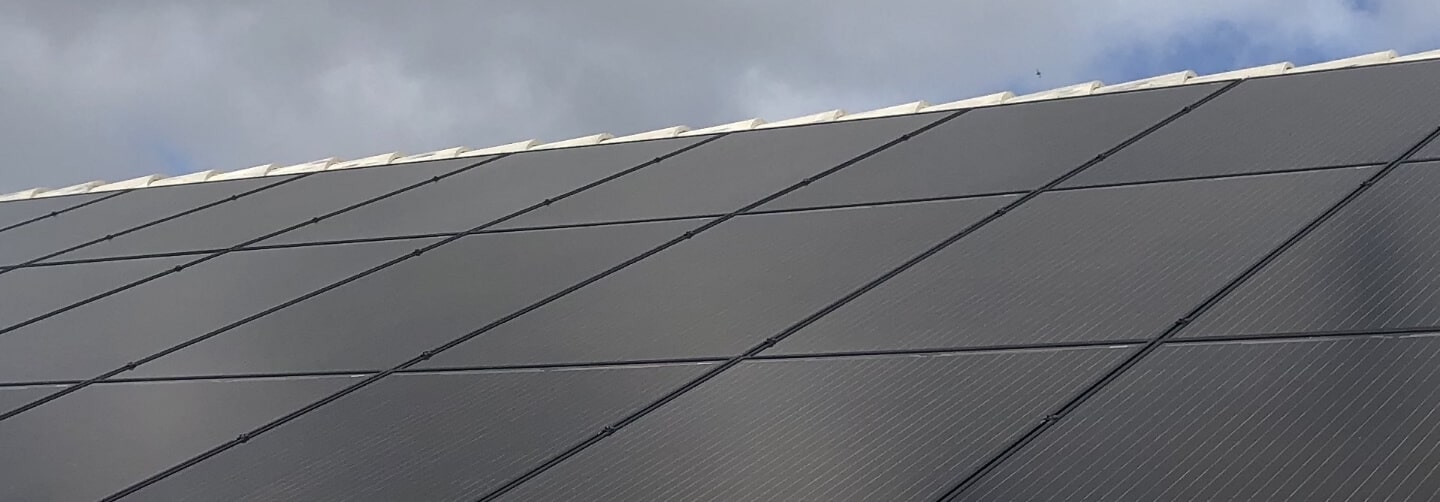How Long Do Solar Panel Batteries Last? Key Factors Affecting Their Lifespan

As the use of solar energy systems continues to grow, more businesses and homeowners are investing in solar battery storage systems to maximize the benefits of solar power. A key question that arises is: How long do solar panel batteries last? The lifespan of solar batteries is influenced by several factors, including the type of battery, how it is used, and the environmental conditions it operates under. Understanding these factors is necessary to help you make the best decision for your energy needs.
Let us delve into the expected lifespan of solar batteries, the key factors that affect their longevity, and how you can take steps to extend the life of your solar battery backup system.
What Are Solar Panel Batteries?
Before diving into the lifespan of solar batteries, let us first understand what they are. Solar batteries store excess energy generated by solar panels. During the day, solar panels produce energy from sunlight, but not all of it is used immediately. This excess energy is stored in batteries for later use, ensuring that your business or home has access to power even when the sun is not shining.
The solar battery system works by storing this energy for use during nighttime, cloudy days, or peak energy usage periods. Solar batteries are a critical component for businesses that want to reduce their reliance on the grid and lower their energy costs over time.
How Long Do Solar Panel Batteries Last on Average?
The lifespan of solar panel batteries can vary depending on the type of battery used and how well it is maintained. On average, most solar batteries last between 5-15 years. However, there are a variety of factors that influence how long they will last and how efficiently they will perform over time.
- Lithium-Ion Batteries
Lithium-ion batteries are the most common type used for solar energy storage. These batteries are known for their higher efficiency, longer lifespan, and lighter weight compared to other types of batteries. Most lithium-ion batteries last between 10-15 years. They are ideal for commercial and residential solar systems due to their reliability and high energy density.
The average lifespan of lithium-ion solar batteries is often linked to how frequently the battery is charged and discharged. With proper care, a lithium-ion battery can maintain around 80% of its capacity even after 15 years.
- Lead-Acid Batteries
Lead-acid batteries are a more affordable option for solar energy storage, but they have a shorter lifespan compared to lithium-ion batteries. These batteries typically last 5 to 10 years. While they are less expensive initially, lead-acid batteries are less efficient and degrade more quickly. They also require regular maintenance, such as topping up the water levels and monitoring for corrosion.
Though lead-acid batteries are still used in some solar panel systems, businesses that want long-term energy savings often prefer lithium-ion batteries for their durability and performance.
- Saltwater Batteries
A newer option on the market, saltwater batteries offer an environmentally friendly alternative to lithium-ion and lead-acid batteries. These batteries are made using non-toxic materials and are easier to recycle. However, they tend to have a lower efficiency rate compared to lithium-ion batteries and may not last as long. Saltwater batteries are still evolving, and while their lifespan typically ranges from 5 to 10 years, they may not be ideal for commercial systems that require high efficiency.
Factors That Affect the Lifespan of Solar Batteries
Several factors play a role in determining how long your solar panel batteries will last. These factors include the type of battery, its usage patterns, environmental conditions, and how well the battery is maintained. Understanding these elements can help you extend the life of your solar battery backup system. Let us explore these factors in greater detail.
- Depth of Discharge (DoD)
The depth of discharge (DoD) refers to how much energy is used from the battery before it is recharged. A higher DoD means the battery is being drained more before being recharged. If you regularly drain the battery to 80% of its capacity before recharging, it will experience more wear and degrade faster than if you only use 50% of its charge.
To maximize the lifespan of your solar battery, it is important to avoid deep discharges and limit how much energy is used before recharging. Keeping your battery’s DoD lower means fewer cycles and less strain on the battery over time, which helps preserve its longevity.
- Temperature
Temperature plays a critical role in the performance and longevity of solar batteries. Extreme temperatures, if hot or cold, can reduce a battery’s ability to hold and release energy. Both overheating and freezing temperatures can accelerate the degradation process.
For lithium-ion batteries, moderate temperatures are ideal. These batteries typically perform better in milder climates. On the other hand, lead-acid batteries are more sensitive to extreme temperatures and may require additional care, such as temperature-controlled storage, to avoid shortened lifespans in either very cold or hot climates.
- Charge and Discharge Cycles
Each time a battery goes through a charge and discharge cycle, it loses a small amount of its capacity. The more frequently the battery is cycled, the shorter its lifespan. For instance, lithium-ion batteries can typically handle 3,000 to 5,000 cycles, while lead-acid batteries handle far fewer, usually 500 to 1,500 cycles.
To prolong the lifespan of your solar battery, it is important to manage energy consumption wisely and avoid overusing the battery. Reducing the frequency of deep discharges and excessive cycling can prevent excessive wear on the battery, ensuring it lasts longer and offers reliable service.
- Battery Maintenance
Proper battery maintenance is necessary for maximizing the lifespan of your solar battery storage system. Regular maintenance includes tasks like checking the battery’s health, cleaning terminals, ensuring there are no loose connections, and monitoring its performance.
For lead-acid batteries, regular care includes tasks such as topping up the water levels to avoid potential damage. In contrast, lithium-ion batteries generally require less maintenance but still benefit from occasional checks to ensure everything is working as it should.
Some solar services offer remote monitoring systems that help track the performance of your solar battery backup. These systems can notify you of any significant drops in performance or issues that need addressing before they lead to serious damage. Regular maintenance and monitoring help keep the system functioning optimally and extend its overall lifespan.
How to Maximize the Lifespan of Your Solar Battery
There are several strategies that can help maximize the lifespan of your solar battery backup system:
- Monitor Battery Health
Regularly monitoring the health of your solar battery can help catch potential issues early on. Many modern solar services offer monitoring systems that alert you to any decline in performance or efficiency. This proactive approach can help you prevent costly repairs and extend the life of your solar battery.
- Maintain Optimal Temperature
Storing your solar batteries in a climate-controlled environment is important to maintaining their health. Avoid extreme temperatures and make sure the battery is in a dry, ventilated area. Excessive heat can shorten the battery’s life, while freezing temperatures can render the battery ineffective.
- Avoid Deep Discharges
To maximize battery life, avoid draining the battery too much. Aim to use only 30-50% of the battery’s capacity before recharging it. This practice reduces stress on the battery, helping it last longer.
- Schedule Regular Inspections
It is a good idea to schedule annual inspections for your solar battery system to make sure everything is functioning properly. Inspections help identify issues with wiring, connections, or the battery itself before they cause significant problems.
Signs Your Solar Battery Needs to Be Replaced
Even with proper care and regular maintenance, solar batteries will eventually reach the end of their useful life. Over time, performance naturally declines. Here are some key signs that your solar battery may need to be replaced:
- Decreased Energy Output: If your battery no longer holds its charge for as long as it did initially, or the energy output has diminished, this could indicate that the battery is losing its storage capacity. This decline in performance is typical as batteries age and can result in your system producing less usable energy.
- Frequent Battery Failures: Another sign to watch for is if your battery frequently shuts down or experiences malfunctions. This could be a result of internal wear and tear, making the battery less reliable. If your battery fails to deliver power when needed, it is a strong indication that it might be time for a replacement.
- Shorter Usage Time: If your solar battery is only providing power for a brief period after being charged, it likely means it is no longer able to store energy effectively. A solar battery that has lost its ability to hold energy will deplete quickly, leaving you without sufficient backup power.
If any of these issues occur, it is important to consult a professional to determine if a replacement is necessary. An expert can assess the condition of your system and recommend the best course of action.
The Cost of Replacing Solar Batteries
Replacing solar batteries can be a significant expense, but it is a necessary investment to maintain energy independence and make sure the continued efficiency of your solar system. The cost of replacing a solar battery backup system can vary widely, ranging from $5,000 to $20,000, depending on factors such as the battery type, system size, and your specific energy needs.
Lithium-ion batteries, while offering longer lifespans and higher efficiency, tend to be on the more expensive side. On the other hand, lead-acid batteries are generally more affordable, making them a more budget-friendly option, although they come with shorter lifespans and lower efficiency.
Although the upfront cost of replacing a solar battery can be substantial, it is important to consider the long-term benefits. A newly installed battery guarantees your system continues to operate efficiently, providing significant energy savings over time. It also supports your ability to store excess solar energy, reducing your dependence on grid power and helping you save on electricity bills. Investing in a solar battery replacement today will make sure your solar system remains a reliable source of energy, providing ongoing benefits for years to come.
Why Choose Solar Energy Solutions of America?
At Solar Energy Solutions of America, we specialize in providing high-quality solar battery backup systems for homes and businesses. Our team works with clients to select the right solar battery for their needs and makes sure that the system is properly maintained to maximize its lifespan. We also offer additional solar services such as solar pool heaters and solar attic fans to help you optimize your solar energy system.
